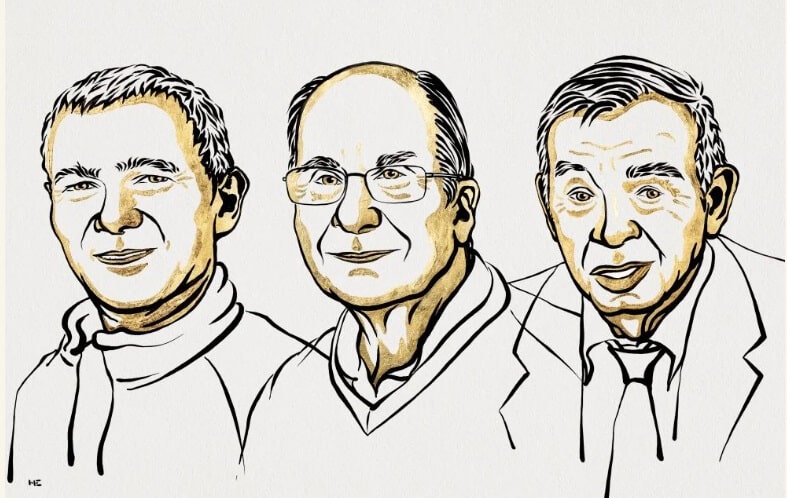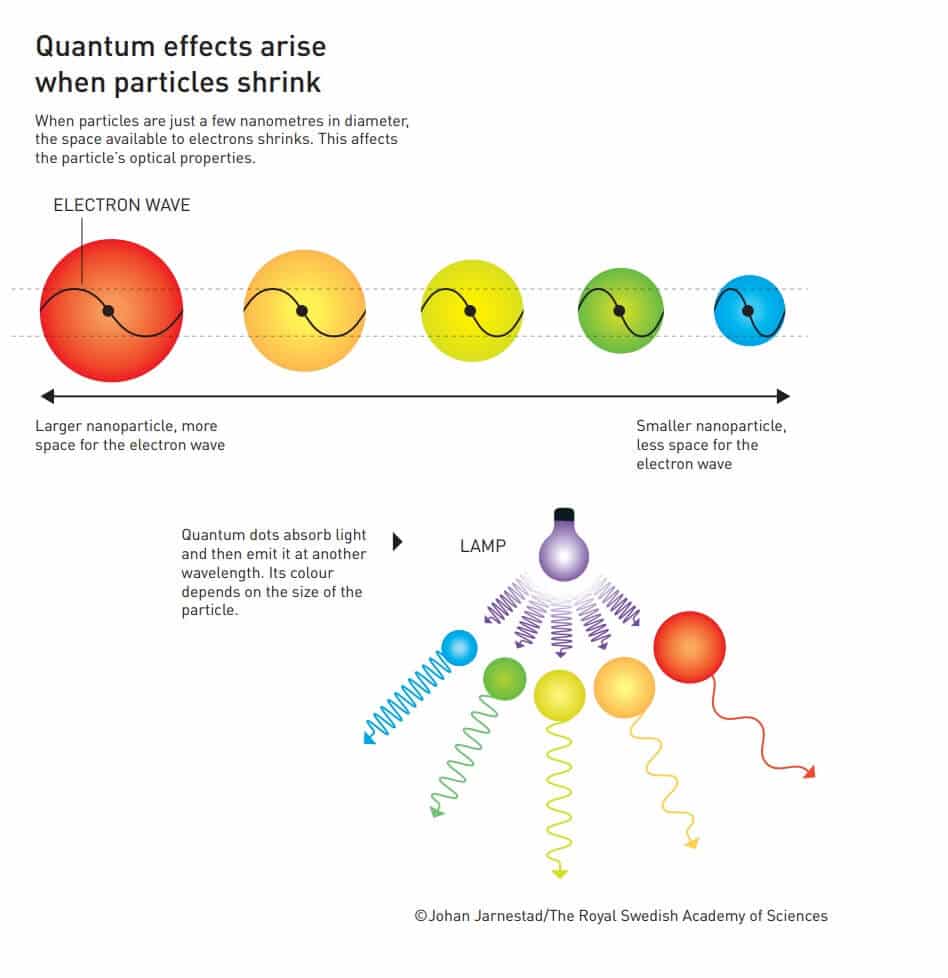כQuantum dots, which are tiny nanoparticles whose size determines their properties, light up computer monitors and TV screens when these are based on QLED technology. In the field of medicine, quantum dots are currently used to map biological tissues
The 2023 Nobel Prize in Chemistry was awarded to three researchers: Moungi Bawendi, Louis Brus and Alexei Ekimov for “The Discovery and Synthesis of Quantum Dots".
Independently, Akimov and Bruce succeeded in creating quantum dots, and the third winner resulted in a breakthrough in their chemical production.
Today, quantum dots, which are tiny nanoparticles whose size determines their properties, light up computer monitors and TV screens when these are based on QLED technology. In the field of medicine, quantum dots are currently used to map biological tissues.

Anyone who studies chemistry knows that the properties of the elements are determined by the number and position of the electrons in the atomic nucleus. However, when the material shrinks to a nanometer dimension, a quantum phenomenon begins to emerge; These properties are controlled by the size of the material. The winners of the 2023 Nobel Prize in Chemistry have succeeded in producing particles so small that their properties are determined by quantum phenomena. These particles, called quantum dots, are of great importance in the field of nanotechnology.
"Quantum dots have fascinating and unusual properties. Their most important feature is that they have different colors depending on their size," says the chairman of the Nobel Committee for Chemistry. Physicists have known for a long time that, in theory, size-dependent quantum effects could emerge in nanoparticles, but in the past it was nearly impossible to produce tiny nanoparticles in the laboratory. Therefore, only a few researchers believed that this idea could be realized.
However, in the early eighties of the last century, Alexey Akimov (Alexei Ekimov) succeeded in creating size-dependent quantum effects in colored glass. The color came from copper chloride nanoparticles, and Akimov demonstrated how the size of the particle affected the color on the glass through a quantum effect.
Quantum effects emerge when the particles shrink
When the particles are only a few nanometers in diameter, the space left for the electrons shrinks. This result affects the optical properties of the particle, such as the color it emits - with the change in size, a change in color also occurs.

Several years later, the researcher Lewis Bruce (Louis Bruce) was the first in the world to demonstrate size-dependent quantum effects in particles floating freely in a liquid.
In 1993, the researcher Mungi Bwendi (Moungi Bawendi) brought about a revolution in the field of chemical production of quantum dots, when his method gave birth to almost perfect particles in terms of their structure. This high quality of the finished product was required in order to use them in advanced and important applications.
Today, quantum dots illuminate computer monitors and TV screens based on QLED technology. They also add shades to the light emitted from LED lamps, and are even used by biochemists and doctors to map biological tissues and obtain sharper images.
However, quantum dots provide the greatest benefit to humanity. Researchers believe that in the future these materials will be able to further contribute to the applications of flexible and foldable electronic components (such as wearable accessories), tiny detectors, smaller solar cells and encrypted quantum communication - so humanity has only begun to discover the ability of these tiny particles.
About the winners
Mungi in Wendy (Moungi Bawendi) Born in 1961 in Paris, France. He received his doctorate in 1988 from the University of Chicago, Illinois, USA. He currently serves as a professor at the Massachusetts Institute of Technology (MIT), in Cambridge, Massachusetts, USA.
Lewis Bruce (Louis Bruce) Born in 1943 in Cleveland, Ohio, USA. He received his doctorate in 1969 from Columbia University, New York, USA. Today he serves as a professor at Columbia University, New York, USA.
Alexey Akimov (Alexei Ekimov) Born in 1945 in the former USSR. He received his PhD in 1974 from the Ioffe Physical-Technical Institute, St. Petersburg, Russia. Former Chief Scientist at Nanocrystals Technology Inc., New York, USA.

2 תגובות
There is no doubt that the phenomenon of "quantum dots" is the key to creating superconductivity. Waiting for the day when this connection will be investigated, and I wish it would happen here in our institutions
Thank you for the article and thank you to the Foundation of the World for the scientific contribution. Without you and your friends we would still be sacrificing virgins to you.